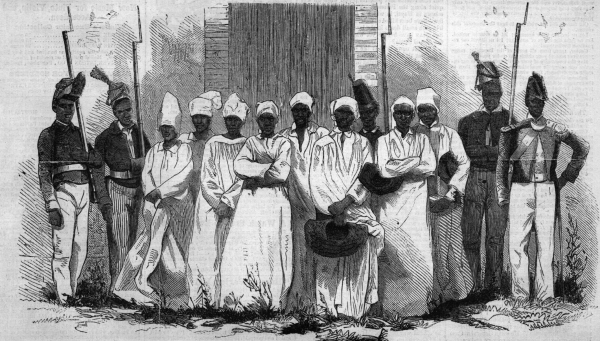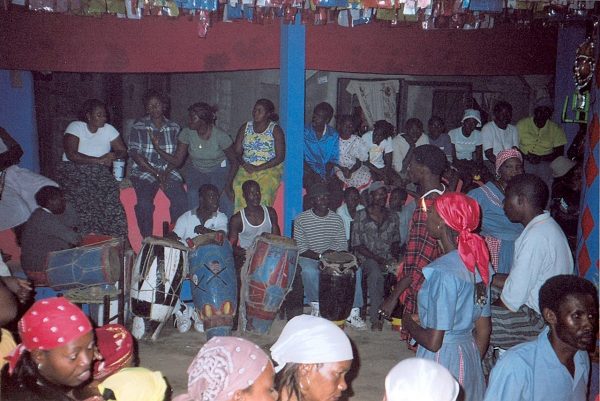Originating from Africa, Voodoo (also spelt Vodoo, Vaudou or Vodun) is certainly a well-known aspect of Haitian culture which has been made popular by the black communities of New Orleans and the movie industry of America. However, there is much more to it than zombies and voodoo dolls! In this article, we’ll discuss voodoo in Haiti, its origins and specificities.
Voodoo in Haiti was brought by the slave workers who were forced to leave their native West Africa, most notably from Togo and Benin but also from the neighbouring countries. As such, it shares a lot with the religion still found in Africa, but has also evolved to become something completely different.
History of Voodoo in Haiti

It is starting from 1685 that Africans were enslaved and sold around the world to provide a workforce for the growing European colonies in America. What was called Saint-Dominigue, which is now Dominican Republic and Haiti, was populated with African slaves who were brought there to work, mainly, in sugar cane plantations. African religions were persecuted in the colonies and thus, voodoo was transformed clandestinely, with its adherent trying to conceal the religion within a form of Christianity to avoid the ire of their captors.
During the struggle for the independence of Haiti, the first black colony to free itself from European rule, Voodoo was an important factor of change as it provided the Africans with a sense of attachment to their own original culture. Many of the main political actors of the Haitian revolution were also spiritual leaders. However, after the revolution happened, many of the political elite of Haiti, which was then struck by upheavals such as the establishment of an (aborted) empire and wars, disowned voodoo in an attempt to gain credibility in the eyes of the West. Voodoo continued to operate secretly, with its adherents using secret codes to share their faith and stories. Voodoo spread around the world as it was carried on by Haitian immigrants moving to Dominican Republic, Cuba, Brazil and the United States.
During the rule of François Duvallier, better known under his nickname of Papa Doc, voodoo was made into a national religion in an attempt to provide Haiti with its own culture, related to its African roots. The rule of Papa Doc being an atrocious dictatorship, however, voodoo was used to also control the masses and frighten them. With Hollywood movies and tourism in New Orleans, voodoo is now more and more known outside of Haiti and Benin.
A religion influenced by European Christianity
While African voodoo is a religion completely divided from Christianity (which doesn’t mean that its practitioner cannot also be Christians, practicing both religions side by side a very common fact), the variety of voodoo which is found in Haiti has emerged from the forced conversion of African slaves to Christianity by their European captors. Where voodoo gods are seen as their own forces of nature in Africa, the figure of Bondyé (Haitian creole coming from Bon Dieu, good god in French) takes a lot of importance in Haiti. Basically, Bondyé is seen as the supreme creator but is also unreachable to common human beings. This is where Loa come into play. Loas are intermediary spirits which act as emissary or representatives of gods who can, contrary to their Lord, be contacted. As such, while African voodoo is its own religion, it can be said that Haitian voodoo is in fact a form of syncretism.
The world of loas
While similar spirits can be found in West Africa such as Legba, Loas have their own distinct appearances and are responsible for their own aspects. They have also been associated to a Christian saint. The voodoo practitioner (also called Vodouisant) aims his prayers, offerings and sacrifices to a certain Loa depending on the function of the Loas and the thing that the practitioner is hoping to receive, be it wealth, cure to an illness and so on. The loa spirits have their own will and ego and it is the vodouisant’s task to charm a Loa and avoid angering it. Each loa is part of its own family and the number of spirits detailed in Haitian voodoo makes up a constellation of patrons.
Loas can be communicated with and supplicated using a whole assortment of trinkets and rituals, similar to those found in Benin and Togo. As such, Voodoo is not only a religion but a sort of traditional medicine.
Haitian Voodoo nowadays

It is very hard to establish how many voodoo practitioners there might be in the world today due to the syncretism of the religion. Indeed, if interrogated in a census, most voodoo practitioners would describe themselves as a sort of Christian. However, Haitian Voodoo, with it sets of practices and beliefs is truly a unique and colourful world and will continue to exist in the future, however flexible its shape is.





